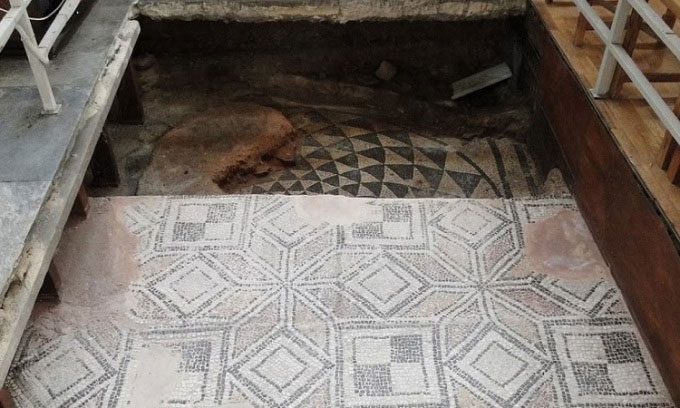Researchers are uncovering the mystery surrounding the burial site of the saint believed to be the inspiration for Santa Claus beneath the ruins of an ancient church in Turkey.

The research team is removing the tile floor to excavate the tomb. (Photo: DHA)
The tomb of Saint Nicholas, the inspiration for Santa Claus, was discovered after archaeologists found the ruins of an ancient church in Turkey that had sunk below sea level in the Mediterranean during the Middle Ages. Saint Nicholas lived from 270 to 343 AD and is famous for the story of giving his inheritance to the poor. Another church built over the foundation of the ancient church helped protect his tomb. It was only when the archaeological team excavated mosaics and stone flooring from the previous church that they identified the final resting place of Saint Nicholas.
This discovery reinforces the theory that Saint Nicholas lived and died in Turkey. The research team reported that the hidden stone floor beneath the sediment layers is also a place he once walked, according to Arkeonews on October 18.
The Eastern Roman church built over the ancient foundation served as a place of worship for Christians from the 5th to the 12th centuries and was surrounded by statues of Saint Nicholas. The foundation of the old church was discovered in 2017 by researchers conducting electronic surveys, revealing a void between the floor and the ground. They will need to work carefully to remove the floor of the Eastern Roman church without damaging the ruins, according to Osman Eravsar, head of the provincial cultural heritage preservation committee in Antalya.
Saint Nicholas was born in the village of Patara into a wealthy family. Scholars believe that at the time of his death in 343, Saint Nicholas was buried in a church in Demre. Saint Nicholas of Myra is a Christian saint from the 4th century, beloved for his generosity towards children, which has made him an immortal symbol and inspired the modern image of Santa Claus. Historical records indicate that Saint Nicholas was buried in a church built in his name, but the exact location of his remains has long remained a mystery.


















































